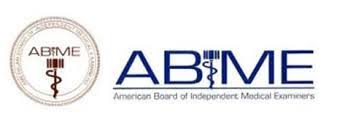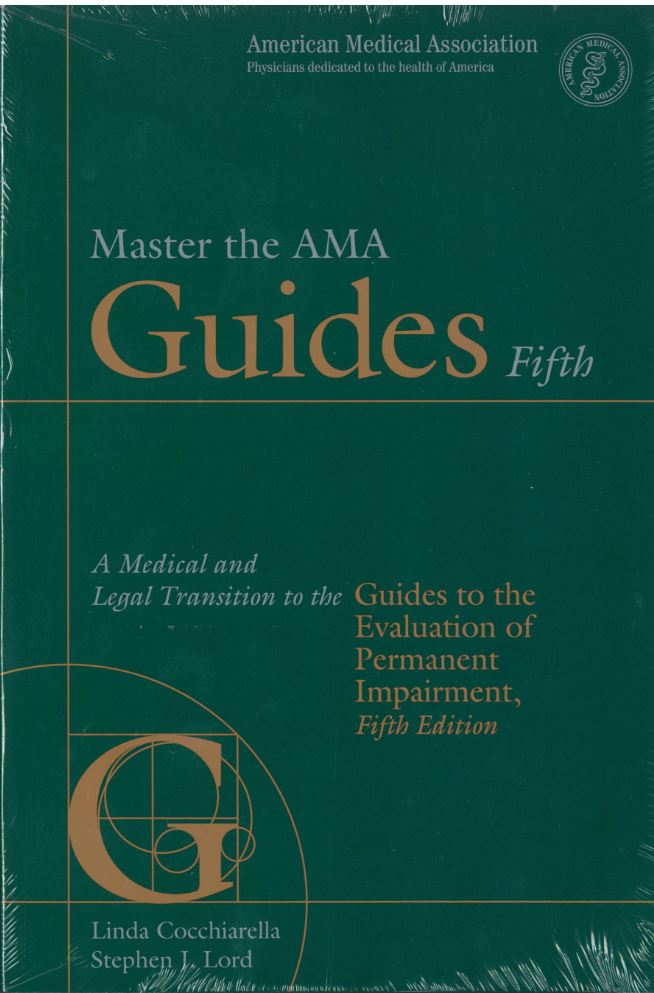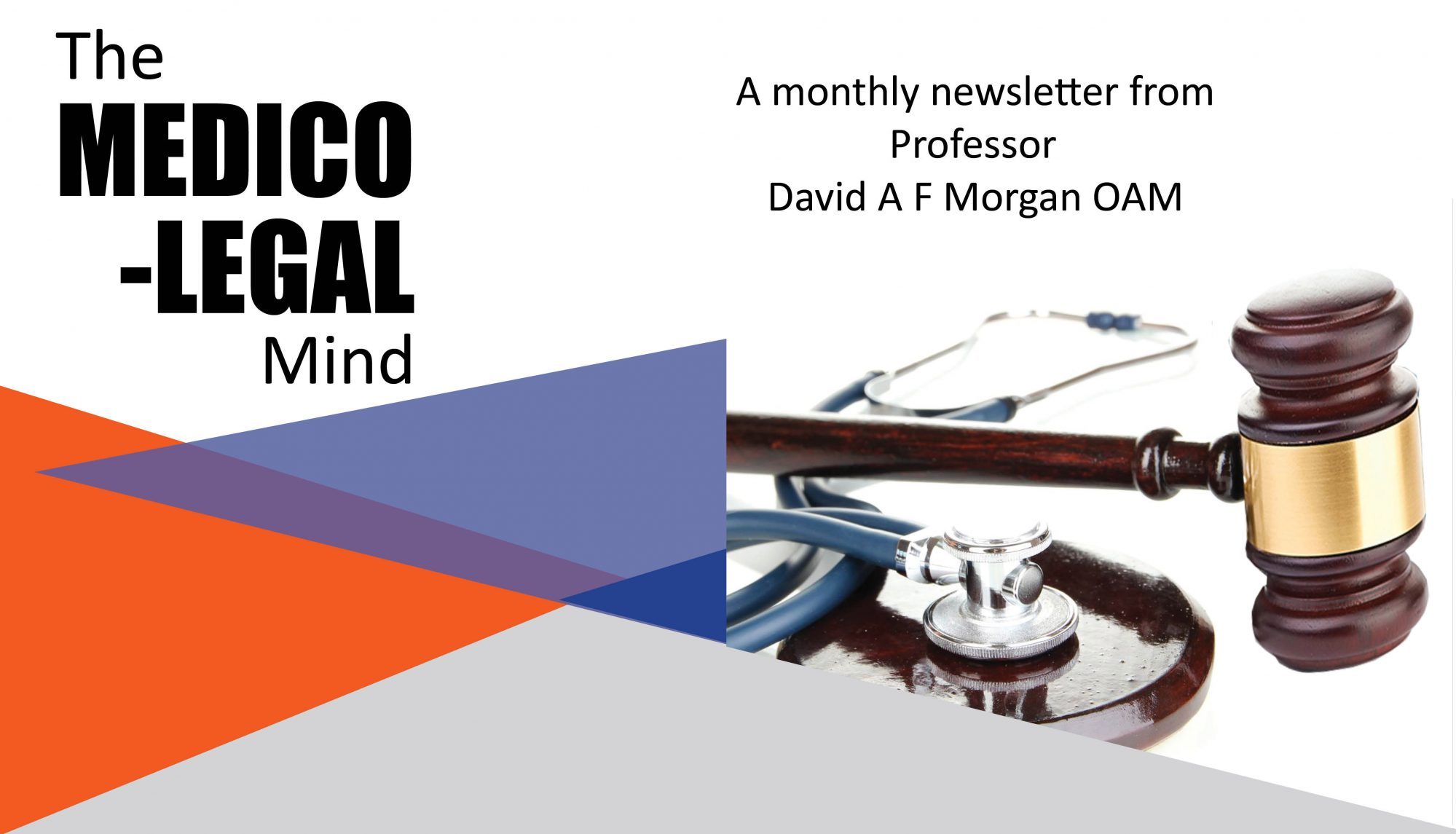GENERAL ADVICE – AUGUST 2019
Certification and Recertification
The American Board of Independent Medical Examiners (ABIME) is combining with the Australian Orthopaedic Association (AOA) and the Royal Australasian College of Surgeons (RACS) in conducting training and refresher courses for medicolegal reporters on the Gold Coast during the first and second weeks of September 2019.
These courses are not cheap and it is easy to amass a fee in excess of $A2000 if all facets of the conference are attended.

The conference is composed of didactic lectures, course work, breakout sessions and examinations.
Whilst expensive and time-consuming, they do assist medicolegal reporters in this country attain and maintain a high standard of expert analysis and promulgation of opinion. Before engaging a medical specialist for a personal injury or medical negligence report, you would be wise to ensure that his or her accreditation is up to date.

Questions and Answers
I have been remiss over the last few months in not answering the questions that have been posed by interested readers. There is a fair amount of overlap and repetition, but the following two questions caught my eye.
Question 1
Why can impairment assessments differ so greatly between two expert reporters?
Ms A J (Townsville)
Dear AJ
There can be several reasons.
The first is that one of the expert reporters saw the patient say four or five years ago whereas the second reporter has a much more contemporary view. During that intervening period, the plaintiff has improved quite dramatically. Clearly, this should never occur because unless the plaintiff has reached a state of maximal medical improvement (and therefore is unlikely to get any better), the first reporter should not have issued an assessment.
With Diagnosis Related Estimate (DRE) based estimates, it should be quite straightforward and plain sailing. A well-performing total knee replacement for example yields a loss of 15% of whole person function. An amputation below the knee gives rise to a loss of 28% of whole person function. There should not be much dispute.
Errors can creep in when the percentages are based upon findings at the time of the clinical examination. For example, restrictions in ankle movement can be assessed using Table 17-11, with considerable losses being quantified if the ankle joint had been rendered relatively stiff. Accuracy in the assessment can only be achieved if the examination is similarly precise. Orthopaedic surgeons are best positioned to perform a thorough, complete and accurate physical examination. Those who come from lesser training are sometimes not so accurate. This can be a potent reason for marked variation in estimates of whole person loss.
Question 2
I was interested in one of your recent newsletters where you compared and contrasted complications and acts of negligence. Your description did make the difference clearer.
It occurs to me however that both complications and acts of negligence can coexist. What is your opinion?
PMcS (Sydney)
Dear PMcS
Thank you for the compliment and yes, you are correct.
Even the best surgeon can have a patient who suffers with a primary joint infection following a total hip replacement. The accepted international rate is approximately 0.6% and that means that 6 patients out of every 1000 will have a joint infection following this type of elective surgery. You can imagine how unhappy those six patients would be. Despite the unhappiness however, and even though extraordinary efforts are expended in preventing surgical site infections, they still do occur. This is a complication and in itself, is unlikely to be the source of a successful action.
The method of management of this complication is of equal importance. With only a few exceptions, a primary joint infection requires prompt operative intervention with lavage and debridement. The sooner and more thoroughly it is done, the better. Antibiotic therapy is also useful, but definitely takes a second place to the operative cleansing process.
If our excellent surgeon fails to act promptly, appropriately or thoroughly, the adverse effects of the complication can be potentiated. This is where the surgeon may stray into the realms of inadequate or inappropriate standards of care.
The suffering patient therefore has thus been subjected to both a complication and a possible act of negligence.
And What About a Question for You?
It occurs to me that I should take this opportunity to ask a question of our readership. To induce a response, I will offer a reward. The reward will be a $50 voucher (not redeemable for cash) to be used otherwise as you wish at “The Overflow Estate 1895”, a magnificent vineyard, cellar door and rural escape positioned on an island in Lake Wyaralong – just 60 minutes’ drive south of Brisbane. You can easily view the Estate, and its charms, at the website~ www.theoverflowestate1895.com.au. The first correct emailed answer will be deemed the winner and if you will excuse me for being so rude, I will be both the first and final judge.

The question?
You are all familiar with the AMA 5 tome. Chapter 15 deals specifically with spinal injuries. Assessments can be performed based upon Diagnosis Related Estimate categories or alternatively, using the Range of Motion method. The question is: “Which of the two methods is preferred by the authors of the AMA 5 Guides and when is the less favoured method to be used”?

Please send your responses to dmorgan@themedicolegalmind.com.au.
